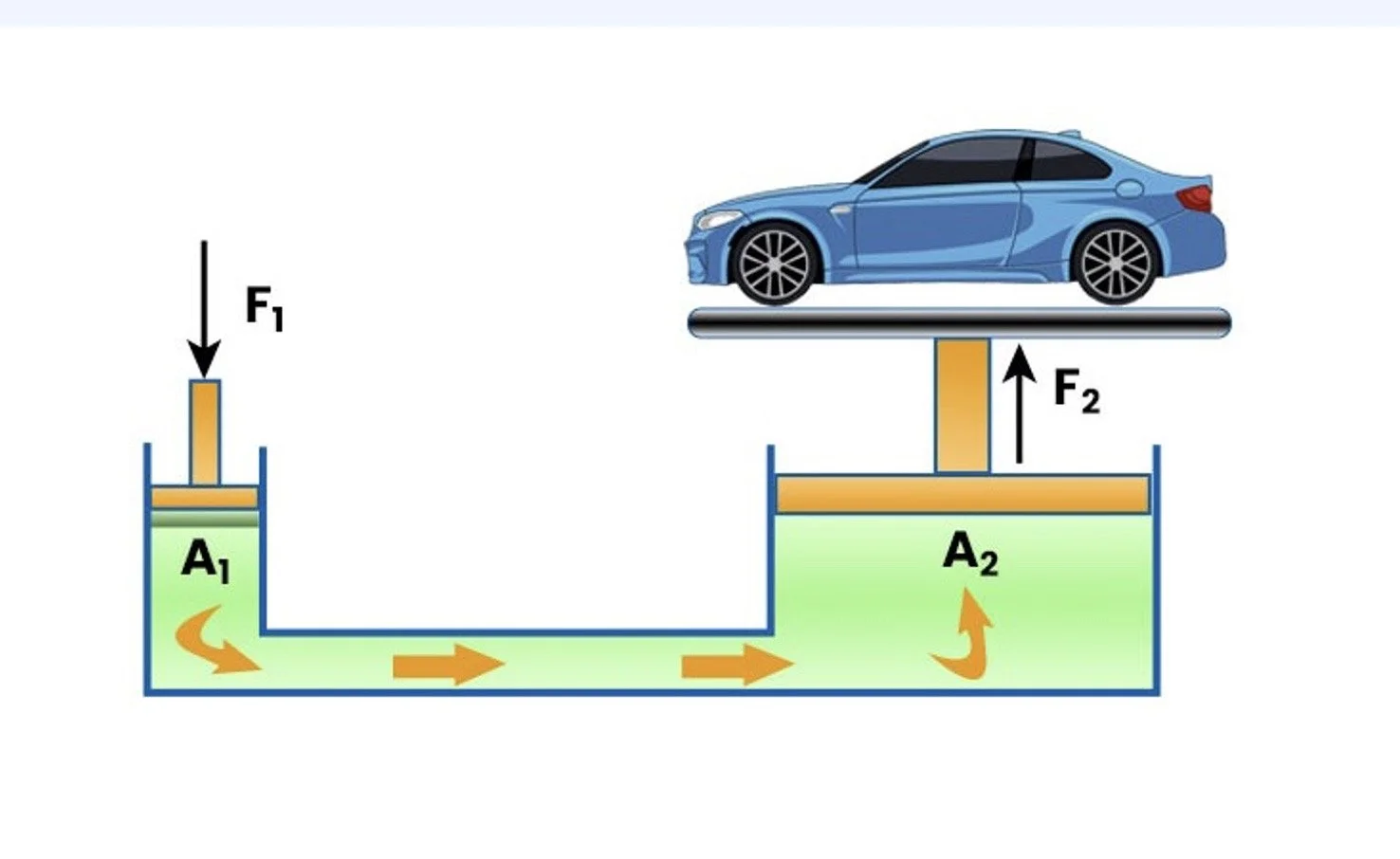Exploring the Depths of Hydraulics
Written By: Hayagreev Kommu
Whirr! Whoosh! The construction site beside my house is back to work with its loud crane. When I looked through the window though, I wondered how can just a metal rod with a bunch of pistons in it carry tons of materials with ease. A bit of research led me to my answer – hydraulics.
What are hydraulic systems?
Hydraulic systems are machines which allow us to get more work done by exerting less force but still producing a greater result. So, I could just exert a force of 100N, but using a hydraulic system, I can convert that same force which I exerted into a 1000N force. “So, how does a hydraulic system do that?” you ask? It’s because of pressure.
The role of pressure
It’s common knowledge that pressure is the amount of force exerted per unit area. For example, someone can exert a force of 10000N on an area of 10m2 (about the area of an apartment bedroom). The resultant pressure would be of 1000Pa (the force exerted on a person at 100cm under the sea). This is because the formula for pressure is force / area. So the pressure is inversely proportional to the pressure applied.
Pascal’s Law
If F1 is 10N and A1 is 5m2, the pressure would be 2Pa. Since the pressure is exerted from Piston 1 to Piston 2, the pressure must be same on both sides. If A2 is 10m2, with some rearrangement of formulas, we can fid that ( F1x A2 )/A1 will give you the force of F2. Since we already know that F1/ A1 is 2Pa, Pressure from piston 1 multiplied by A2 gives us F2. So, A2 is called the multiplying factor. This is what the Pascal’s Law explains. Pascal’s name is also used as the unit of pressure (Pa). Till now we have learnt that we can use liquids to do multiply force. But why not solids or gases? That’s because solids do not change shape as necessary to the piston and gases are highly compressible (they will absorb the force and compress instead of passing it on like liquids do).
Applications in the real world
In the real world, these laws and ideas of hydraulics can be used to do huge amounts of work with little amounts of force. Contrary to the assumptions of many, water isn’t the liquid normally used in these systems. It’s normally oil as water is corrosive and it may also boil under high temperatures. These systems are applied in car brakes, cranes, car lifts, and much more.
